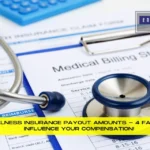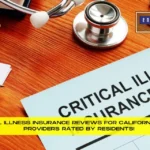When you find yourself whispering, “I have no money and need help,” it’s a sign you’re in a financial pinch. But don’t despair; sometimes, the solution may lie in unexpected places.
Table of Contents
Here are seven unconventional ways to turn your finances around, starting today:
1. Rent Out Your Assets
You might have valuable assets you’re not fully utilizing. It could be an empty room in your house, your car, or even smaller items like a lawnmower. Consider renting these out for short periods to generate some immediate cash flow.
2. Become a Tasker
Numerous apps and platforms exist where people post errands or tasks they need help with. Whether it’s doing someone’s grocery shopping, assembling furniture, or even freelance graphic design, these platforms offer a way to earn money on your own time.
3. Flip Freebies
You’d be amazed at what people give away for free. Check platforms like Craigslist or Facebook Marketplace for free items. Often, these just need a little TLC or a quick repair. Once refurbished, you can sell them for a profit.
4. Use Your Social Network
No, not just Facebook or Instagram. Your real-world connections could be a treasure trove of opportunities. Maybe a friend needs help with weekend childcare, or a neighbor requires a dog sitter. Not only do you earn a bit of money, but you also strengthen your community ties.
5. Skill-Based Online Courses
Websites like Udemy or Skillshare allow you to create courses based on your skills. Whether you’re good at gardening, coding, or cooking, someone out there wants to learn from you. Create a course and earn passive income through enrollees.
6. Mystery Shopping
Yes, it’s a real thing. Many companies pay people to shop at their stores and then provide feedback on their experience. The assignments vary, and while it may not make you rich, it can provide a small, consistent income stream.
7. Virtual Yard Sale
Take a hard look at your belongings and consider what you can live without. Platforms like eBay, Poshmark, or Mercari provide an online space where you can sell items ranging from used clothing to electronics. It’s faster and simpler than a traditional yard sale and opens your market to a much wider audience.
Facing financial difficulties can feel overwhelming, but remember, you have more resources at your disposal than you might think. Each of these options is a viable way to generate income relatively quickly. Start with one, master it, then move on to the next. Before you know it, you’ll have turned your financial situation around and gained a newfound sense of financial empowerment.
- For Expert Financial Insights And Guidance, You Can Visit Our Sister Site – ArabsGeek.com Now!
- Curiosity Piqued? Dive Into the Most Captivating Financial Content by Visiting Our Homepage!
- Unlock Exclusive Business Opportunities! 🚀 Connect with Us Now at our Email: [email protected]!
I Have No Money And No Prospects
It’s simple to feel overburdened, helpless, or even defeated when you’re facing a position where you have no money and no possibilities. But it’s important to keep in mind that this is only one chapter in your life and not the whole thing. You may not find the solution right away or easily, but with a little perseverance, imagination, and resourcefulness, you may change the course of events. Here is a step-by-step plan to help you get through this challenging time:
Step 1: Financial Emergency Triage
Start by taking care of your fundamental requirements, such as food, shelter, and utilities. See whether you qualify for any emergency aid programs or food banks in your area. Even one-time cash assistance for rent or utility expenses is provided by some charity.
Step 2: Assess Your Skill Set
Consider your abilities and talents. Consider your strengths in a broader sense rather than just those that pertain to your current position. This will assist you in finding new revenue streams, regardless of how unusual they may be.
Step 3: Leverage Your Network
Contact your friends, family, and previous coworkers to see if they know of any employment openings, freelance opportunities, or even short-term jobs like pet- or house-sitting. Opportunities may appear in the most unlikely locations.
Step 4: Go Online
For independent contractors with skills ranging from writing and graphic design to data entry, there are numerous internet platforms available. With the help of websites like Upwork, Fiverr, and Freelancer, you can work from home and make money.
Step 5: Unusual Work and Day Labor
Consider taking on odd jobs or day labor positions that pay on the same day if immediate revenue is your top priority. Look for possibilities in your community’s classifieds or on community boards.
Step 6: Upgrade or Re-skill
Numerous online courses are cost-free and can speed up the process of learning new abilities. Although it’s not a quick fix, retraining can considerably increase your employability in the future.
Step 7: Take Care of Your Mental Health
Your mental health may suffer as a result of the stress of having no money and no possibilities. Emotional relief can be obtained by engaging in simple activities like walking, practicing deep breathing, or speaking with friends. Never undervalue the influence of a sound mind.
Step 8: Plan and Budget
Create a budget that lists all of your necessary costs and potential sources of income. Having a financial roadmap can provide you some sense of control and a clearer path forward, even when you’re in serious financial trouble.
Step 9: Be Flexible
Consider moving for job or switching to a different industry at this point. Extreme circumstances frequently call for extreme responses, and major adjustments may provide new opportunities.
Step 10: Keep Your Hope Alive
Though it may sound cliche, it is crucial to keep a bright and optimistic mindset. bear moving forward, surround yourself with encouraging individuals, and bear in mind that your current situation is only temporary.
The road from having “no money and no prospects” to having financial stability is more likely to be a marathon than a sprint. No matter how modest, progress is still progress. You’ll discover a way to change your present narrative and open the door to a more secure and satisfying future with constant effort, a targeted strategy, and unshakeable confidence in yourself.
I Have No Money And No Job
It can be tremendously intimidating and emotionally exhausting to face a reality where you have no money and no employment. But it’s crucial to keep in mind that your present situation does not determine your potential for the future. Here is a guide to help you get through this trying moment and lay the groundwork for a more stable financial future:
Step 1: Give Basic Needs Top Priority
Prioritize taking care of your fundamental requirements, including food, shelter, and utilities. Look into community resources like food banks, unemployment benefits, and other programs that can offer immediate aid.
Step 2: Request Emotional Assistance
The emotional burden of being jobless can be overwhelming. Avoid being by oneself. Consult your loved ones, or look for free community counseling programs. Support on an emotional level is essential at this time.
Step 3: Assess Your Marketable Skills
Make a list of your abilities, both professional and those you might not have thought of as potential sources of income. Anything from writing and graphic design to handyman work or cooking could be included.
Step 4: Connect to Your Network
Inform your circle of friends that you are looking for work. Sometimes, personal relationships can bring you to opportunities or leads you hadn’t considered. To widen your professional network, think about attending online networking events or webinars tailored to your business.
Step 5: Look for Opportunities to Work Remotely and Freelance
Numerous gigs are available on websites like Upwork, Freelancer, and Fiverr that you may complete from home. Despite the fact that competition can be intense, be optimistic. Make yourself stand out by customizing your bids for each job.
Step 6: Take into Account Temporary Roles
Even though you could be looking for a more solid position, temporary or part-time work can generate revenue right away. Seasonal employment, retail work, or gig economy positions like food delivery or ride-sharing are a few examples.
Step 7: Market Unnecessary Items
Search your house for things you don’t need. You may make some quick money by selling these on online marketplaces like eBay or Facebook.
Step 8: Pick Up a New Trade
Even though you won’t get paid right away, developing a new skill can increase your marketability in the long run. Many online learning environments provide free courses to aid with skill development.
Step 9: Be Imaginative
Have a talent for writing, baking, or crafting? Make use of your skills to produce goods or content that people will pay for. Consider exploring platforms like Etsy, Medium, and others.
Step 10: Continue Using
Although it may seem obvious, this is essential. Continuity is important in the job search. For each application, tailor your CV and cover letter, and follow up as needed.
Even if it is difficult, achieving financial stability when you have no money and no employment is not impossible. Every day offers the possibility of a fresh start. You’ll lay the foundation for a better, more secure future by exhibiting resilience, creativity, and an action-oriented mindset.
I Have No Money To Pay My Bills
Escaping financial hardship is no small matter, and finding yourself without funds to cover bills can be both anxiety-inducing and stressful. While it may feel hopeless at the time, there are actions you can take to better your circumstances; here is a roadmap that should lead you out:
Step 1: Breathe Deeply
Remind yourself not to panic; stress can cloud your judgement, so take a deep breath and mentally prepare yourself to address the situation head on.
Step 2: Prioritize Your Bills
Not all bills are equal; prioritize them in terms of urgency. Necessities like rent, utilities and insurance should come first when budgeting funds available to you. Understanding which bills must be addressed first will allow you to maximize any available funds.
Step 3: Reach Out to Your Creditors
One of the first things you should do when facing debts is reach out to those companies you owe money to. You might be amazed at how willing many are to work out payment plans or temporarily defer bills; failing this, could only lead to late fees or legal complications that become much more serious over time.
Step 4: Secure Financial Assistance.
Locate emergency financial aid or assistance programs. From unemployment benefits, food banks, or charitable organizations there may be resources available that could assist during difficult times.
Step 5: Market Non-Essential Assets for Liquidation
If you have items lying around that you no longer require, why not sell them online? Whether its clothing, electronics or furniture – platforms such as eBay, Craigslist and Facebook Marketplace provide convenient ways to quickly turn these assets into cash.
Step 6: Temporary Work or Odd Jobs
Although it’s not an ideal long-term solution, gig work can offer a quick way to generate quick money. Websites like TaskRabbit or local community boards are great places to find odd jobs that pay instantly or within days or weeks.
Step 7: Negotiate Additional Expenses
Talk with service providers like your internet and cell phone providers in order to negotiate lower rates. Sometimes they offer “hardship plans” or can direct you towards lesser-known discounts that might help.
Step 8: Borrow Wisely
As a last resort, borrowing money might be necessary in order to pay off immediate debts. Be it from friends and family loans or small personal loans, make sure that you fully comprehend all terms before borrowing any amount – as this may depend on repayment plans being in place and you having enough savings available to repay.
Step 9: Draft a Budget
Now that the immediate crisis has passed, it is essential to plan for its aftermath and look toward the future. Draft a budget detailing your income and expenses while looking for ways to cut expenses going forward.
Step 10: Seek Professional Advice.
If your financial situation doesn’t improve, seek advice from a financial counselor. They may assist in exploring options like debt consolidation or bankruptcy that provide more structured ways out.
“Having no money to pay your bills can be an extremely distressing situation, but it’s essential to remember you have resources available to you. By acting quickly and making informed decisions, you will create the foundation for a more stable financial future.”
My Dog Is Dying And I Have No Money
The pain of seeing a beloved pet suffer is indescribable, but there are still steps you can take to make sure your furry friend receives the best care possible within your means.
Step 1: Consult Your Vet
The first thing you should do is consult your veterinarian, even if you think you can’t afford it. Some vets offer free initial consultations or sliding scale fees based on income. Explain your financial situation openly—they may be willing to work out a payment plan or offer discounted services.
Step 2: Seek Financial Aid
Various organizations and charities offer financial assistance for emergency pet care. Look into options like The Pet Fund, RedRover, or Care Credit. These programs can help cover a portion of medical costs.
Step 3: Community Fundraising
Consider starting a crowdfunding campaign on platforms like GoFundMe or asking for help on social media. Your network might surprise you with their generosity during this trying time.
Step 4: Use Local Resources
Animal shelters or rescue organizations often have connections with veterinary services and could guide you to more affordable care options. Some even have their own clinics that offer services at a reduced cost.
Step 5: Prioritize Care
If multiple treatments are needed, ask your vet to help you prioritize them based on what’s urgently needed to relieve pain or prolong your pet’s life without compromising its quality.
Step 6: At-Home Care
Consult your vet for advice on providing palliative care at home. Measures like medication for pain relief or special diets can sometimes make a significant difference in your pet’s comfort level.
Step 7: Tough Decisions
There may come a point where the kindest option is to let go. Euthanasia is never an easy decision, but it might be the most humane one, particularly if your pet is suffering. Many vets offer this service at a reduced fee for those who can’t afford it.
Step 8: Emotional Support
Remember, you don’t have to go through this alone. Reach out to friends, family, or pet loss support groups where you can share your feelings and concerns. The emotional toll of this experience is as real as the financial one, and it’s okay to seek help.
Step 9: Cherish Your Time
Your pet is more than just an animal; it’s a member of your family. Cherish the time you have left together. Take photos, go for a short walk if possible, or simply spend quiet time cuddling.
Step 10: Plan Ahead
After the immediate crisis is over, think about getting pet insurance for future pets to avoid finding yourself in a similar situation down the line.
While no set of steps can truly mitigate the pain of facing a pet’s serious illness, especially with financial constraints, I hope these suggestions offer some guidance and support during this extremely difficult time.
My Husband Died And I Have No Money
While it’s an emotionally overwhelming time, facing financial hardships on top of your grief can make it even more difficult to cope. I can offer some guidance to help you navigate the financial aspects of your loss.
Step 1: Seek Immediate Help for Essential Bills
Contact local government agencies, religious organizations, or community centers that might offer emergency financial assistance for essential bills and necessities. Don’t hesitate to reach out; you’d be surprised at the support that’s often available.
Step 2: Consult with a Financial Adviser
Schedule a consultation with a financial adviser to help evaluate your current financial situation. Some offer free initial consultations, and many specialize in post-bereavement financial planning.
Step 3: File for Life Insurance and Other Benefits
If your husband had life insurance, employer benefits, or any other death-related benefits, file the necessary paperwork as soon as possible. This may require a death certificate and other legal documents, so gather everything you’ll need ahead of time.
Step 4: Contact Creditors and Lenders
Reach out to any creditors and lenders to inform them of your situation. Many have protocols for financial hardships due to bereavement, like temporary relief from payments or restructuring of debt.
Step 5: Inventory Assets
Make a comprehensive list of all assets—property, investments, valuables—and consult with an attorney to discuss their division and possible liquidation, should it become necessary.
Step 6: Set Up a Budget
This is a good time to reconsider your expenses and income, and to create a new budget. Evaluate what costs you can cut and what assets you may need to sell to maintain a sustainable lifestyle.
Step 7: Apply for Survivor Benefits
If you’re in the U.S., you might be eligible for Social Security survivor benefits. Even if you think you might not qualify, it’s worth checking.
Step 8: Reach Out for Emotional Support
Speak with family and friends for emotional support, and consider joining a grief support group. Psychological well-being is as important as financial stability during this trying time.
Step 9: Delay Major Financial Decisions
Try to avoid making any major financial decisions like selling property or making large investments for at least a few months. Emotions run high during times of loss, which can cloud judgment.
Step 10: Consult with Legal Counsel
Consider consulting an attorney to ensure that you’re taking all necessary legal steps during this period. This could include probate procedures, property transfers, or drawing up a new will for yourself.
During this agonizing period, financial worries can feel like salt on an open wound. While each of these steps requires time and effort, they also pave the way toward regaining some level of financial stability. It won’t make the emotional journey any easier, but it may alleviate some of the stress as you navigate life without your spouse.
I Need A Lawyer And I Have No Money
Finding yourself in need of legal representation without the means to pay for it can be an overwhelming experience. However, there are still options available to help you get the legal assistance you need. Here’s how to navigate this challenging situation:
Step 1: Free Consultations
Many lawyers offer a free initial consultation. Use this time to discuss your case, understand your options, and learn about any potential fees you may incur should you proceed.
Step 2: Legal Aid Organizations
Non-profit legal aid organizations provide free legal services to low-income individuals for certain types of cases like housing, family law, and employment issues. To find these organizations, a simple internet search like “legal aid near me” could yield relevant results.
Step 3: Public Defenders
If you’re facing criminal charges, you have the right to an attorney even if you can’t afford one. Public defenders are appointed by the court and are free of charge, although the quality of representation can vary.
Step 4: Law School Clinics
Many law schools offer clinics where law students, supervised by licensed attorneys, provide legal services for free or at a reduced cost. These clinics can help with a variety of legal issues but may not handle complex cases.
Step 5: Pro Bono Services
Some lawyers offer pro bono (free) services for clients who can’t afford representation. You can usually find these through your local bar association or by directly contacting law firms to inquire.
Step 6: Sliding Scale Fees
Some lawyers offer sliding scale fees based on your income. Don’t hesitate to discuss your financial situation openly when consulting potential attorneys.
Step 7: Contingency Fees
For certain types of cases like personal injury or workers’ compensation, lawyers may work on a contingency basis. This means they only get paid if you win your case, taking a percentage of the settlement as their fee.
Step 8: Payment Plans
Some lawyers offer flexible payment plans, allowing you to pay fees over an extended period of time. Make sure you fully understand the terms before agreeing to any payment arrangement.
Step 9: Online Legal Services
Several online platforms provide affordable legal advice and document preparation services. While this isn’t the same as having a dedicated attorney, it can be a useful and cost-effective resource for simple legal matters.
Step 10: Seek Recommendations and Reviews
Whether you find an attorney through legal aid, a law school clinic, or pro bono services, always look for reviews or recommendations to gauge the quality of representation you can expect.
Although the prospect of securing legal assistance without funds is daunting, the important thing is to not lose hope. There are resources and options designed to help you get the legal help you need, so don’t let financial constraints deter you from seeking justice or resolving your legal issues.
My Girlfriend Is Pregnant And I Have No Money
When you’re struggling financially, learning you’re going to be a parent may be a very stressful and emotional experience. But don’t worry; there are practical things you may do to deal with this difficult circumstance. This road map will assist you in getting ready for the journey ahead:
Step 1: Open Dialogue
Talking openly and honestly with your partner is the first step. Ensure that your opinions towards the pregnancy and your future together are aligned. For the duration of this procedure, communication is essential.
Step 2: Medical aid and Health Insurance
Look into the medical assistance or public health programmes in your area that are offered to expectant mothers. Prenatal and postnatal care can be saved by Medicaid or comparable programmes.
Step 3: Financial and Budgetary Planning
Make a new budget that takes the cost of the baby into account. This will help you determine how much money you need to raise. Reduce any unneeded spending where you can.
Step 4: Job Search and Side Businesses
It’s time to actively hunt for work if you’re unemployed right now. Consider starting a side business to augment your income if you currently have a job. Each little bit counts.
Step 5: Obtaining Government Support
Look into any social assistance programmes for which you could qualify. In the United States, assistance with food and nutrition is available through programmes like WIC (Women, Infants, and Children) and SNAP (Supplemental Nutrition Assistance Programme).
Step 6: Reach Out to Support Networks
Don’t be afraid to ask your family and friends for assistance. Your burdens can be significantly lessened by things like baby showers, hand-me-downs, and even emotional support.
Step 7: Low-Cost and Free Baby Essentials
Free baby supplies and clothes banks are available in many locations. Use these tools and make savings where you can.
Step 8: Parenting and Education Classes
Some businesses provide free parenting classes. This is an excellent chance to gain useful knowledge and perhaps connect with other expectant parents who might serve as a support system.
Step 9: Legal Counsel
Ask for free legal help or guidance to understand your rights and obligations if your relationship status changes or if a child custody dispute needs to be resolved through legal mediation.
Step 10: Focus on the Long Term
It’s simple to feel overwhelmed, but strive to stay centred and upbeat. Long-term ambitions like continuing your education and advancing your work might dramatically raise your financial situation over time.
Remember that despite similar difficulties, many have successfully travelled this path. Your greatest assets in the months and years to come will be your love and dedication to your fiancée and your unborn child. Maintain your composure, make a detailed plan, and, most importantly, never give up hope. Although the path ahead is difficult, it is not impassable.











